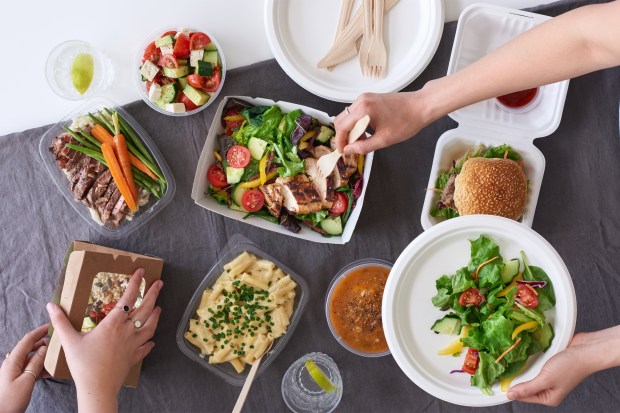How Restaurants Can Tap Into Full-Time Delivery Staff

Restaurants are designed to cook great food — not operate delivery networks. “They are not meant to be logistics companies,” EatStreet CEO and Co-Founder Matt Howard told PYMNTS in an interview.
As a result, EatStreet doesn’t just provide an app and online services to enable restaurants to offer takeout and food delivery: It’s starting to offer drivers to its restaurant clients as well. And these aren’t independent contractors that are all-too-common in the gig economy: They’re W-2 employees.
With this arrangement, Howard said EatStreet can better control its brand and have more professional drivers. The company has its drivers wear uniforms and holds them to high standards.
Beyond delivery, the EatStreet platform encompasses ordering through multiple channels — from online ordering to social media integration. These channels work to give restaurants more customers and orders.
Food Delivery Gets Social
The idea behind EatStreet is to offer restaurants the option to accept orders through multiple channels. When a restaurant joins the platform, for example, it’s listed on EatStreet’s online marketplace at eatstreet.com and becomes available to diners through a mobile app. These channels give restaurants new customers, Howard said.
In addition to its own channels, EatStreet works with restaurants on their own websites. Through their services, the company can bring online ordering to an existing restaurant website that is customized to a particular restaurant’s needs. The service may be useful to a restaurant in a smaller town that might have an outdated website — or might not even have a website at all, Howard said.
Beyond the EatStreet platform and restaurant websites, the company integrates with Facebook through an application programming interface (API). Through the API, Facebook users can place an order on an individual restaurant page. The benefit for restaurants is they don’t have to set up the ordering with Facebook once they’re on the EatStreet platform: The company does it for them.
“They don’t have to go through the legwork of partnering with Facebook directly,” Howard said.
To reduce friction in the payment process, EatStreet allows diners to pay with a variety of methods, such as Apple Pay. The ideal scenario, Howard said, is to offer any payment methods consumers want.
In fact, EatStreet added Apple Pay because customers asked for the mobile payment method. And Howard realizes the importance of providing a customer’s ideal payment option.
“It will definitely increase our conversion rate to have the payment method that a consumer prefers,” Howard said.
The College Town Market
EatStreet is focused on Main Street more than, say, Michigan Avenue. Similar to regional players, the company focuses on smaller cities and towns such as Madison, Wisconsin — where the company is based.
“A lot of our competition is really focusing on the tier-one markets of the country — New York, Chicago, L.A. — and markets like that,” Howard said. “[But] we want to be the go-to app for every person in these small- to medium- sized cities.”
EatStreet targets a unique market: college towns. And it’s not all about students hitting the books before finals either: College students graduate and start their careers. But sometimes they don’t leave their college towns.
“A lot of college students stay in these markets after they graduate,” Howard said. “That’s a big vertical for us as well.”
In addition, EatStreet seeks to serve families and make it easier for them to order food. As a father, Howard knows this challenge firsthand.
“There’s never enough time in the day, so making it easy for me to get food delivered to my house for my family is also something that is a growing trend for the industry,” Howard said.
The Road Ahead
In the future, EatStreet plans to continue to focus on smaller markets. It has identified 300 cities that fit its business model. But it wants to grow out its delivery business too. The company only offers delivery in 10 cities, so there’s plenty of room to expand that offering.
Still, Howard is well aware that there are several apps that offer food delivery — like Grubhub and Seamless. Even so, the online delivery market is booming.
Uber Eats, for example, was on track to post more than $3 billion in gross sales by the end of 2017, The Financial Times reported. Introduced in 2014 alongside a handful of other experimental services, Uber Eats operates worldwide in 29 countries. However, Howard believes there’s plenty of business for at least a few companies.
“There isn’t going to be just one large company in the space,” Howard said. “We think there is room for three or four large players.”